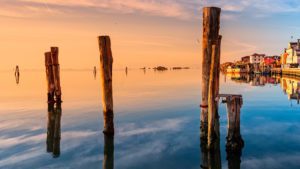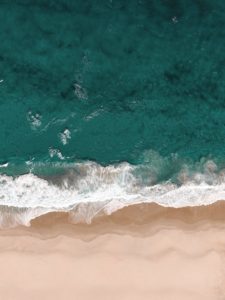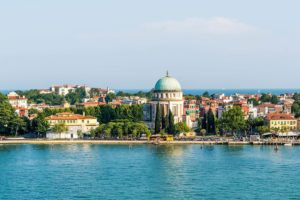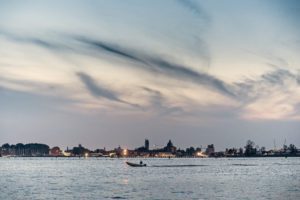Experience
Lido of Venice
Venice is Piazza San Marco, the Rialto bridge and gondola rides in the canals, but that’ s not all.
If the desire is to get to know the area in a different way and away from the tourist crowds, you can venture out on a tour of the Venice lagoon, enjoying not only nature and its enchanting landscapes, but also culture and the discovery of forgotten traditions.
The Venetian lagoon is the largest in Italy: it includes the mainland (with the city of Venice and more than fifty other smaller islands) and the “aquatic” part, with its numerous canals, sandbanks and shoreline areas. Connected to the Adriatic Sea by three inlets: San Nicolò (north of Lido di Venezia), Malamocco (south of Lido) and Chioggia.
In 1987, it was declared a Unesco World Heritage Site – all the more reason to set sail for the magnificent islands.
The island of Venice Lido, which is easily reached from Venice, Chioggia or Cavallino/Treporti, is in a privileged position to start a tour of the lagoon.
To begin with, the Lido is the starting point for discovering the lagoon.
Starting from the north, we reach the area of San Nicolò, with its nature oasis, Benedictine Church and Monastery, and one of the oldest Jewish Cemeteries in Europe.
Then it’s on to the centre, with its Art Nouveau villas and historic hotels, and the glamorous places where the Film Festival is held every year. We then move south to visit the ancient village of Malamocco (a miniature Venice where the cartoonist Hugo Pratt was based) and finally arrive at Alberoni, the most southerly area, where we can enjoy another natural oasis with one of the best-preserved dune systems in the Adriatic.
If the northern lagoon is best known for Murano, Burano and Torcello, from the Lido it is easy to get to other lesser-known but equally surprising jewels.
Starting from the Lido, you can also discover the island of Certosa, to enjoy the most incredible views of the lagoon, or the Vignole, a small town famous for its vegetable gardens and its trattorias, or walk along Sant’Andrea to admire the remains of its 16th-century fortress (which cannot be visited today). But also worth a visit is Sant’Erasmo, the largest island in the northern lagoon, known as the vegetable garden of the Serenissima, known for its Slow Food Presidium artichokes and wines, or San Francesco del deserto, a small place of peace where one can retreat to meditate and relax in the silence of the lagoon.
From the Lido it is also easy to reach other islands that hold hidden secrets and echoes of the history of the Serenissima and its privileged relationship with other cultures. This is San Lazzaro degli Armeni and the Lazzaretto Vecchio. The former is a very important centre of Armenian culture, granted to the monks by the Serenissima in 1717. Today it houses a lavish museum and library with exhibits from all over the world and more than 170000 volumes.
The Lazzaretto Vecchio was the world’s first hospice for people suffering from the plague and leprosy, and today it is possible to visit it thanks to a group of volunteers who take care of its maintenance and the Lazzaretto Nuovo island (located in the northern lagoon).
Another is the mysterious island of Poveglia, a land of legends and ghosts, where mooring is not possible but which can be admired from afar during a boat tour.
From the Lido you can continue exploring the lagoon, with just a few minutes by waterbus or ferry boat, to the fascinating island of Pellestrina, a thin strip of land where sleepy villages, fishing boats, vegetable gardens and the homes of lace-makers, who carry on the centuries-old tradition of spindle lace-making, intermingle. If you walk (or cycle) to the southern end of Pellestrina, you will reach its most isolated area, connected by a strip of land to the rest where there is only room for a stretch of the Murazzi, squeezed between the lagoon and the Adriatic Sea. Here there is a wild beach and a lush green nature oasis, which because of its isolation is an ideal breeding ground for many types of birds.












